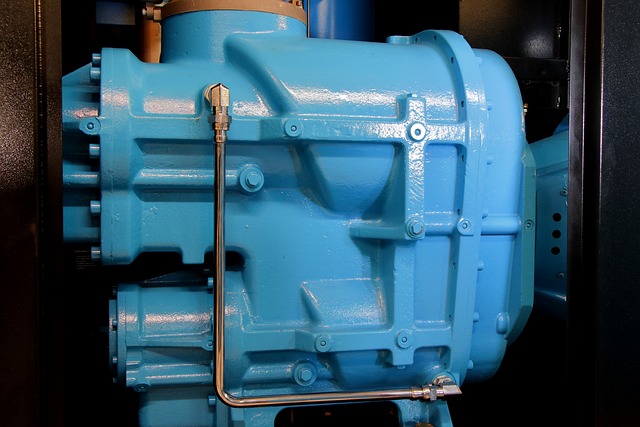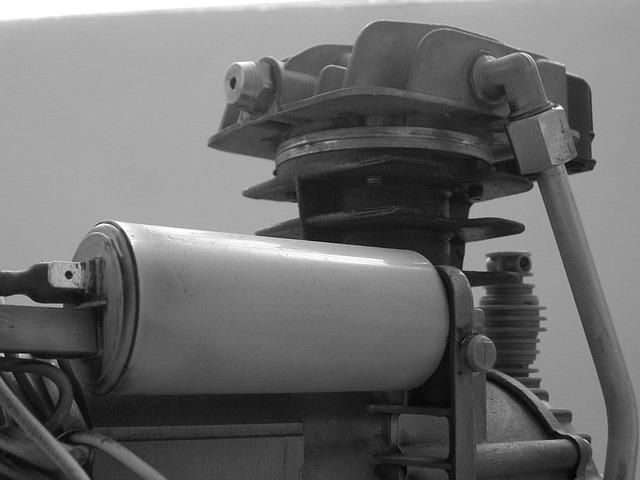In the dynamic world of textile manufacturing, air compressors are at the heart of delivering precise and efficient power to vital production processes. With the industry in pursuit of greater energy efficiency, cost savings, and reliability, the integration of permanent magnet synchronous motors has emerged as a game-changing solution.

Application of PMSMs in Textile Air Compressors
The Role of Air Compressors in the Textile Industry
Air compressors are crucial to power various processes in the manufacturing of textiles. The units drive spinning machines, give compressed air for weaving, and support dyeing and finishing operations. Each one of these applications depends on the steady, reliable performance of air compressors to maintain smooth and efficient production. Without them, the precision machinery utilized in these processes would be unable to function effectively, leading to production slowdowns and potential quality issues.
Unique Requirements for Air Compressor Systems in the Textile Industry
Steady and Reliable Air Supply
One disruption or fluctuation in air pressure could make a great deal of difference and lead to very costly machinery breakdowns, consequently leading to downtime and costlier maintenance. This results in various defects in fabric production, hence lowering its quality.
Energy Efficiency
Textile manufacturers are extremely concerned with energy efficiency; since it has to decrease operating costs and reduce negative impact on the environment. A major share of production expenditure depends on energy consumption. Consequently, optimization of air compressor systems matters to achieve sustainable and profitable textile manufacturing. Efficient air compressors bring about reduced energy consumption, along with a decrease in the production cost; which ultimately makes the operation eco-friendly.
Traditional Air Compressor Systems
Induction motors traditionally have been the motor of choice for air compressor systems in the textile industry. Although generally satisfactory, induction motors do not offer the same potential for energy savings and precise control as more advanced motor technologies. For this reason, other options that can provide better efficiency and control have been pursued.
The Integration of Permanent Magnet Synchronous Motors (PMSMs)
Overview of PMSMs
PMSMs are one of those new-generation advanced motor technologies developed to bring substantial improvement compared to conventional induction motors. The motors boast of high efficiency, precision control, and high reliability. The employment of PMSMs in the textile industry air compressor systems brought several key benefits as described below.
Benefits of Integrating PMSMs
Practical Applications and Benefits of PMSMs in Textile Air Compressors
Case Studies and Examples
So far, several textile manufacturers have implemented PMSMs into their air compressor systems and reported significant energy savings and reduced carbon emissions. For instance, a textile manufacturer could attest to experiencing a 20% drop in energy consumption and thus carbon emissions after switching to PMSMs.
Increased Productivity
With more prominent control capabilities and energy efficiency of PMSMse productivity increases. Because it keeps air pressure consistent to minimize any sort of downtime, thus enables the textile manufacturers to produce quality fabrics and to increase their production using PMSMs.
The Potential for PMSMs to Revolutionize the Energy Landscape in the Textile Industry
Summary of Results and Benefits
The integration of PMSMs into air compressor systems has resulted in remarkable outcomes: energy savings, reduction of emissions, and higher productivity. These advantages highlight the potential of PMSMs to change the textile industry’s energy landscape.
Future Potential and Innovations
There is much room for innovation and furtherance in the technology of PSMs. Further research could yield even more efficient solutions, which would be cost-effective and, hence, improve the sustainability of textile manufacture and profitability accordingly.
Emphasis on Sustainability and Profitability
Adoption of PMSMs in air compressor systems is not merely upgrading the technology but a leap into a sustainable and profitable future for the textile industry. With reduced energy consumption and environmental impact, PMSMs will be able to contribute to the achievement of sustainability goals for textile manufacturers while improving their bottom line.
Air compressors hold highly critical importance in the textile industry, where most key processes are powered with assured effectiveness in the whole value chain. Besides, the advanced energy efficiency, capability in control, and productivity have been the clear improvements that PMSMs have enabled over the years in air compressor systems. These point out additional pathways in which PMSM technology can continue making strides and promise a greener and more profitable future for textile making.

Future Developments and Trends
Significance of PMSMs in Textile Air Compressors
Focus Areas in PMSM Development
Advanced Motor Control Technologies
Energy Recovery and Storage Mechanisms
Standardization and Certification Processes
Potential and Promising Future of PMSMs in Textile Air Compressors
Finally, the trends and novelties in PMSM applied to textile air compressors represent an enormous impulse that has happened to textiles until now. Recap: In this section, readers found a well-drawn sketch of major developments in current advances and future trends with this novel technology applied to air textile compressors.
Emphasis: The role of PMSMs in driving energy efficiency, cost savings, and sustainability within the textile industry is salient. With the use of advanced motor technologies, textile manufacturers can reduce operational costs while at the same time minimizing environmental impact and improving overall productivity.
On that note, it might very well be expected that air compressor systems will have prospective applications in the future on the back of changed and reinvented PMSMs. Consequently, higher efficiency gains, cost economies, and sustainability for the PMSMs should result in further leaps expected within the next few years because continuous innovative and technological developments may be achieved. PMSMs will form the future of textile manufacture by enabling productive, ecological, and advanced technological manufacturing processes.